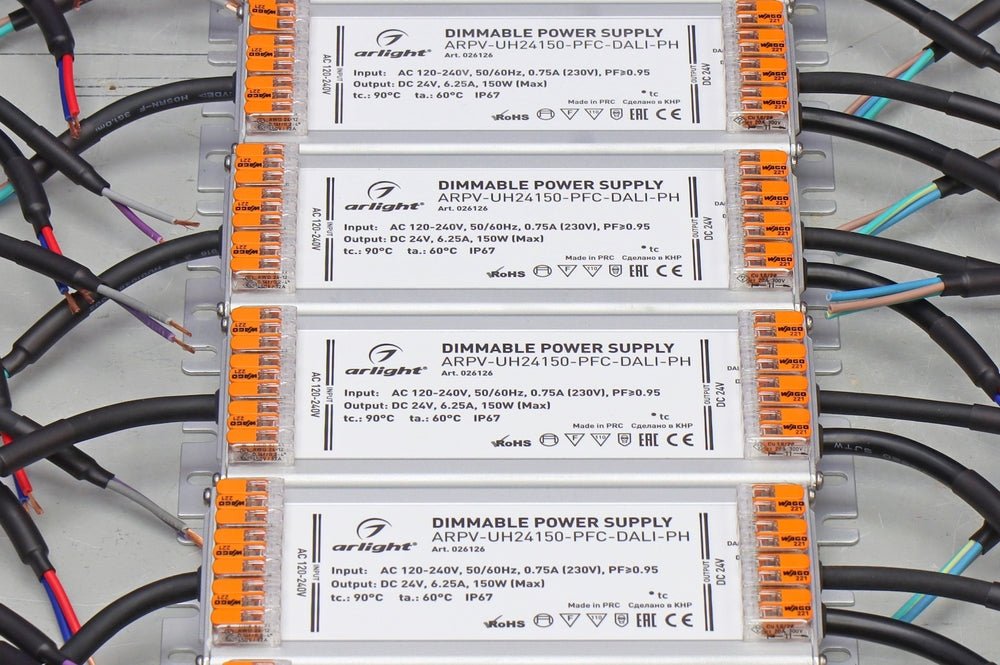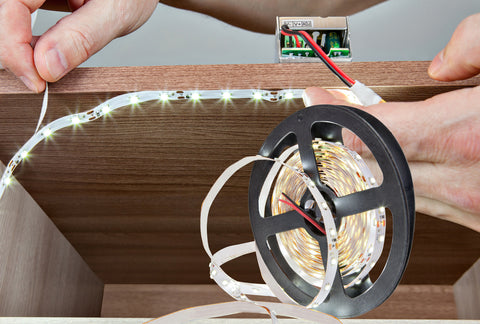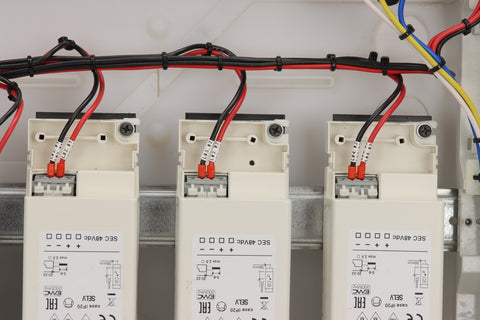
In the realm of LED lighting systems, drivers hold a crucial position. Among various types, the Constant Voltage (CV) LED driver has gained significant attention. This comprehensive guide is dedicated to understanding the constant voltage LED drivers, their functioning mechanism, applications, strengths, weaknesses, and their differences compared to constant current drivers. We will also address the IP ratings relevant to these drivers.
A Constant Voltage (CV) driver is an integral component of LED power supply that provides a stable, fixed voltage level. Unlike a constant current driver that focuses on maintaining a consistent current, a CV driver ensures the voltage remains constant. The standard voltage outputs for constant voltage drivers are usually 12V, 24V, 36V, and 48V DC, aligning with the needs of various LED fixtures that operate at these specific voltage levels.
Constant voltage LED drivers find their utility in systems where the LED's forward voltage is set and unchanging, such as in LED strip lights or specific types of LED signage. This ensures that all the LEDs within the circuit receive the same voltage, which becomes imperative for consistent lighting performance in applications involving long LED strips or large LED displays.
How Does a Constant Voltage Power Supply Work?
The operation of a constant voltage power supply or driver centers around maintaining a consistent voltage level. When you connect a CV driver to an AC mains supply, its first job is to convert the high-voltage AC into a lower, set voltage DC that is suitable for the connected LED lights. This voltage level remains unchanged, regardless of the fluctuations in the input supply or changes in the load's impedance.
Essentially, a CV driver adapts the power delivery to ensure the voltage remains constant across the LED load. This consistency is maintained by varying the current in response to changes in the load. When the load decreases, the driver increases the current and vice versa, maintaining the balance needed to keep the voltage level steady.
Applications of Constant Voltage Driver
Constant Voltage LED drivers are ideal for a variety of applications where the load requirements are known and consistent. Here are some common applications:
-
LED Strip Lighting: Constant voltage drivers are frequently used to power LED strip lighting. These drivers maintain a fixed voltage across the strip, ensuring uniform brightness throughout. They are perfect for lighting in residential and commercial settings, including kitchens, bathrooms, living rooms, and outdoor accent lighting.

- Signage and Billboard Lighting: LED-powered signs and billboards often use constant voltage drivers. They ensure consistent illumination across the entire sign, irrespective of its size or shape, contributing to high-quality, eye-catching displays.
-
Architectural Lighting: Constant voltage drivers are suitable for architectural lighting installations where multiple LED fixtures are involved. They provide a stable voltage supply, facilitating reliable and efficient operation.

- Landscape Lighting: In landscape or outdoor lighting setups, constant voltage drivers can effectively power low-voltage LED lighting fixtures, creating beautiful, well-lit outdoor spaces.
-
Retail Display Lighting: For illuminating retail displays, constant voltage drivers offer an excellent solution. They maintain a consistent level of brightness, enhancing the display's visual appeal.

- Under Cabinet Lighting: In residential and commercial settings, under cabinet LED lighting often utilizes constant voltage drivers. They provide even illumination, enhancing functionality and aesthetics.
- Automotive Lighting: In automotive applications, constant voltage drivers are used for various LED lighting systems, including dashboard lights, tail lights, and interior cabin lights. They provide reliable, stable power, contributing to safety and visibility.
- Aquarium Lighting: In aquarium setups, constant voltage drivers can efficiently power LED lighting systems, creating a visually appealing environment for aquatic life.
Remember, the choice of a constant voltage driver depends on the specific requirements of your lighting setup, including the number of LEDs, their configuration, and the overall power demand.
What are the Advantages of Constant Voltage Driver?
The constant voltage drivers offer several benefits that make them a preferred choice in specific LED lighting setups. These advantages include:
- Broad Compatibility: CV drivers are compatible with a wide array of LED fixtures that operate at fixed voltages. This range includes common fixtures like LED strip lights, signage, and under-cabinet lights.
- Simplicity in Design: The design of a CV driver-led system is relatively simple because each LED unit in a parallel circuit receives the same voltage. This parallel configuration eliminates the need for complex wiring systems and makes installation easier.
- Flexibility in Length: In LED strips powered by CV drivers, there is the flexibility to cut the strips to any length without needing to adjust the driver. This flexibility can be crucial in custom installations.
What are the Disadvantages of Constant Voltage Driver?
Despite the various advantages, constant voltage drivers have a few limitations as well:
- Inconsistent Brightness: In some instances, a CV driver may not ensure consistent brightness across all LEDs, especially if there are variations in the LEDs' forward voltage. This can lead to inconsistent lighting effects.
- Temperature Effects: Changes in operating temperature can influence the LED's forward voltage, which can lead to variations in brightness levels in the absence of proper thermal management.
What is an Example of a Constant Voltage Driver?
An instance of a constant voltage driver is the MEAN WELL LPV Series, which includes models like LPV-60-12, LPV-100-24, and more, with different voltage and power capacities. These drivers are widely used in applications such as LED strip lighting, signage, and other low-voltage installations.
What are the Difference Between Constant Voltage and Constant Current Power Supplies
The primary difference between constant voltage and constant current power supplies lies in their method of delivering power:
Constant Voltage power supplies maintain a set voltage across the load, altering the current as needed to uphold the voltage level.
Constant Current power supplies, on the other hand, maintain a consistent current across the LED load. They adapt the voltage to ensure a steady current, making them ideal for situations where maintaining a specific current level is vital.
Why is DC Voltage Constant for Constant Voltage Power Supply?
In a constant voltage power supply, the DC voltage remains constant due to the driver's internal regulation mechanisms. The driver is designed to keep this voltage steady and adjusts the current accordingly to account for any changes in the load. Therefore, despite any variations in the connected load or input supply, the output voltage from a CV power supply remains steady.
Why is Voltage Constant in A Wire or through an LED Strip?
In a wire or an LED strip connected to a CV power supply, the voltage remains constant across the entire length because of the nature of the CV driver. This driver regulates the voltage to the desired level and ensures that every LED in the parallel circuit receives the same voltage, ensuring uniform illumination.
What are the IP Ratings for Constant Voltage LED Drivers?
Understanding the IP rating of a Constant Voltage LED driver is crucial as it indicates the level of protection the device offers against solids (like dust) and liquids (like water). It becomes particularly important when your LED lighting application is situated in a challenging environment. The ratings range from IP20, suitable for secure, dry indoor settings, to IP67, fit for more demanding outdoor or wet conditions. Let's break this down:- IP20: Constant Voltage LED Drivers with an IP20 rating provide fundamental protection against solid objects larger than 12.5mm, but no protection against liquids. They're suitable for dry, indoor environments like living rooms or offices. An example might be a basic LED strip driver for interior accent lighting.
- IP40: These drivers offer protection against solid objects larger than 1mm. Primarily designed for indoor applications, these drivers could be used in environments like workshops where there may be small particles in the air but no water exposure.
- IP54: Offering protection against dust and splashing water, IP54 rated Constant Voltage LED Drivers are suitable for damp or dusty indoor areas, or sheltered outdoor areas. They could be used for LED lighting in a garage or a covered outdoor seating area.
- IP65: Providing full dust protection and resistance to low-pressure water jets, these drivers are ideal for outdoor applications exposed to dust and rain, such as garden or exterior wall lighting.
- IP67: With full dust protection and the ability to resist temporary immersion in water (up to 1 meter for 30 minutes), these drivers are suitable for challenging outdoor environments or applications that may expose the driver to water, such as exterior ground lighting or lights around a swimming pool.
When choosing a driver, it's essential to consider both the power requirements of your LED setup and the environmental conditions it will be exposed to, ensuring you select a driver with the appropriate IP rating. A higher IP rating typically correlates with a more robust driver, but also a higher cost, so it's crucial to balance these factors against your project's specific needs.



